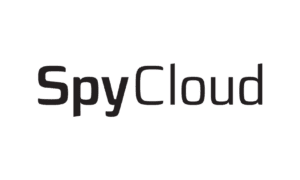We all know cloud adoption is growing fast. But with that growth comes a challenge most teams are still trying to figure out—security.
Cloud setups today are complicated. Businesses now use multiple platforms, third-party tools, and remote environments, which opens the door to new risks that traditional security methods cannot keep up with.
Vulnerability management is a key part of protecting cloud environments. It involves finding, prioritizing, and fixing weak spots before attackers can access them.
In this article, we’ll discuss why this matters, what’s wrong with the old way of doing things, and how Fortinet is helping modern businesses handle this better. This guide is helpful, especially for those who manage cloud infrastructure or enterprise IT.
Why Cloud Vulnerability Management Matters
Let’s be honest—keeping track of cloud risks isn’t easy.
We’ve got developers deploying fast, systems running in different clouds, and users connecting from anywhere. That makes it challenging to see everything, let alone protect it.
Some common problems we face today:
- Misconfigured cloud settings
- Outdated apps or services
- Unpatched operating systems
- Shadow IT (unauthorized tools running without oversight)
- Third-party integrations with weak security
When left unchecked, these small gaps can lead to major breaches. And it’s not just about stolen data.
The costs can be huge:
- Lost revenue from downtime
- Damage to brand reputation
- Legal penalties for compliance violations
- Recovery costs that can last months
Many of these threats could’ve been prevented with smarter, faster tools. That’s where modern vulnerability management becomes critical.
Fortinet’s Smart Approach to Vulnerability Management
Enter threat and vulnerability management system from Fortinet—built for today’s complex cloud environments.
Unlike older tools that scan on a schedule and require hours to produce results, Fortinet’s system operates in real-time. It constantly checks systems, whether they’re in AWS, Azure, on-prem, or a hybrid mix.
Here’s what sets it apart:
- Continuous Scanning: Fortinet doesn’t just look once a week. It constantly monitors, identifying new vulnerabilities as they emerge.
- AI-Powered Prioritization: It’s easy to get overwhelmed by hundreds of alerts. Fortinet uses smart scoring to tell us what to fix first based on actual risk.
- Integrated Patching Tools: No need to switch between platforms. Fortinet enables us to transition from detection to action in one place.
- Cloud-Ready: It works seamlessly across cloud-native environments, on-premises servers, and hybrid setups, eliminating the need for separate tools for each.
- Easy Interface: Security tools shouldn’t slow us down. Fortinet’s dashboard is clean and clear, making it easy to understand and act on insights.
With this setup, our teams save time, reduce risks, and focus on what matters most.
Key Benefits for Modern Enterprises
What does this actually mean in our day-to-day work?
Let’s break it down:
- Complete Visibility: We can view all assets, devices, and vulnerabilities across all environments in a single view.
- Faster Response Time: Real-time alerts and automation enable us to respond promptly. We patch sooner.
- Smarter Risk Decisions: Not every threat is high-risk. Fortinet helps us focus on what actually matters first.
- Better Teamwork: Whether it’s the security team, IT, or DevOps, everyone can work from the same system with clear info.
- Compliance Made Easier: Fortinet provides tools to help organizations meet standards such as PCI DSS, HIPAA, GDPR, and more.
To make this more straightforward, here’s a quick table comparing Fortinet to traditional tools:
| Feature | Traditional Tools | Fortinet Smart VM |
| Scan Frequency | Manual or scheduled | Continuous, real-time |
| Prioritization | Basic or missing | AI-driven |
| Multi-Cloud Compatibility | Limited | Full coverage |
| Patching Process | Disconnected | Fully integrated |
| Ease of Use | Complicated | Clean, user-friendly |
These advantages can differ between a minor fix and a major breach.
Fortinet in Action: Real-World Use Cases
Let’s look at how Fortinet helps real businesses.
Healthcare Organization
This group stored patient records using a mix of cloud and on-prem systems.
Fortinet found critical gaps in underused systems. Within hours, they patched issues that had gone unnoticed for months. They now meet HIPAA compliance more easily.
Financial Firm
With services across AWS and Azure, this firm struggled to keep up with the growing number of alerts.
Fortinet provided them with a unified dashboard and intelligent prioritization. Their IT team reduced the time spent chasing false alerts by over 50%.
Tech Startup
They scaled fast and had tools running on every cloud.
Fortinet’s automation helped them discover hidden services and fix issues across multiple cloud accounts. After six months, they reported a 70% drop in open vulnerabilities.
These aren’t edge cases. These are everyday wins for teams using the right tools.
Why It’s the Future of Cloud Security
We’re entering a time when manual security alone won’t suffice.
Cloud systems move too fast. Threats evolve too quickly. And businesses can no longer afford to react slowly.
Here’s why Fortinet’s innovative vulnerability management is the future:
- It scales with us—as we grow, Fortinet grows with us
- It automates the boring parts—like sorting alerts and generating reports
- It fits into a broader security stack—firewalls, endpoint protection, and access controls, all under one roof
- It focuses on action—not just information
With AI, automation, and seamless integrations, Fortinet is already ahead of many businesses in terms of where they need to be.
Final Thoughts
Let’s be clear—finding vulnerabilities isn’t the hard part anymore. Acting on them fast and effectively is.
That’s why smart vulnerability management tools like Fortinet are essential. They don’t just show you what’s wrong. They help you fix it—faster, smarter, and with less stress.
If your current tools feel clunky, slow, or disconnected, it’s probably time for a change.
Fortinet’s vulnerability solution is a step toward real cloud security. It is designed for modern businesses that want to stay ahead of the curve, not behind it.



































